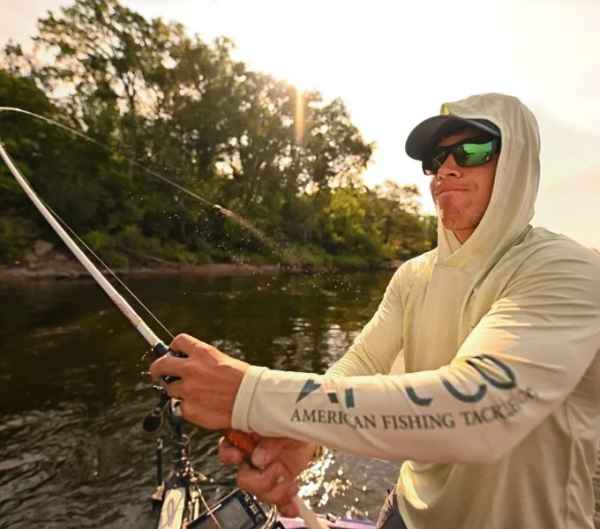What Anglers Need to Know About Performance Fishing Shirts
By Bill Shedd, AFTCO

In the past decade, performance fishing shirts have evolved from vented, cotton and poly-blend shirts towards materials and fabrications that feature improved synthetic technology. But in the world of performance fishing shirts, which is better—old or new?
Since 1989 the American Fishing Tackle Company (AFTCO) has designed, produced and sold over 25 million garments for men and women anglers and others who love being in, on, and around the water. Those sales include cotton T-shirts, long sleeve and short sleeve sun protection performance shirts, hats, fishing shorts and more. Our long-term involvement with fishing clothing has generated many questions from both our retail partners and consumers about sun protection fishing shirts. At the center of many of those questions is confusion and misinformation.
It is not as complicated as many make it to be.
To understand the essence of the sun protection fishing shirt you only need to focus on the fact that these shirts simply shade your skin from the ultraviolet rays of the sun. While the brands (including AFTCO) that make sun protection fishing shirts, and the retailers who sell them, often make it seem more complicated than simple shading, it really is not.
Understanding UPF Ratings
Sun protection fishing shirts have only recently begun to catch on with freshwater anglers, even though they’ve been popular in saltwater fishing for more than 10 years. Several million sun protection fishing shirts are sold every year. And yet, this important angler item and the UPF rating associated with fishing shirts remains widely misunderstood.
UPF stands for Ultraviolet Protection Factor. It is a measurement of ultraviolet light that reaches your skin when wearing a particular garment. UPF ratings were created in Australia in 1996 following studies by a several Australian swimwear companies. When the shirt is woven or knitted it leaves small holes with no fabric to shade your skin from the sun, easily visible with a microscope. A UPF rating of 25 means that 1/25th or 4% of the sun’s rays will reach your skin. Said another way, 96% of the sun’s rays will be blocked. A UPF rating of 50 means that 1/50th or 2% of the sun’s rays will reach your skin with 98% of them blocked.
Since the number 50 sounds so much larger than 25, anglers often assume that a sun protection performance fishing shirt with a UPF 50 rating would block far more sun rays than UPF 25. The fact is that it blocks only 2% more.
Fabrication is More Important Than Fabric
Different fabrics do provide some sun protection advantages, but the real difference maker in a sun protection fishing shirt is the fabrication and the size of the microscopic space between the threads. In addition, factors that effect the size of that space and therefore the sun protection of the fishing shirt include weight or diameter of the thread, stretch and even color. A darker color will typically provide better sun protection because the die in the thread helps expand the diameter of the thread and therefore reduce the size of the microscopic holes between the threads. The tradeoff is that darker colors tend to trap more heat than lighter colors so the slight advantage you gain in sun protection may be overcome by not being as cool in a darker shirt.

Cotton vs. Synthetic Fabric
In years past, cotton T-shirts were the main shirts worn by anglers to protect themselves from the sun and to stay cool. Today, cotton is increasingly maligned for its inability to prevent sunburn, even if unfairly so.
With a very low UPF 5 rating of the typical white cotton T-shirt, most think a cotton shirt will not reasonably protect them from the sun. In reality, it is uncommon to get sunburned in a long sleeve cotton tee unless you are fair skinned. Think abut it. When was the last time you got a sunburn wearing a long sleeve cotton T-shirt while fishing?


 Advertising
Advertising